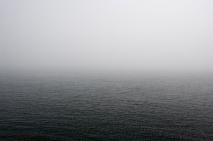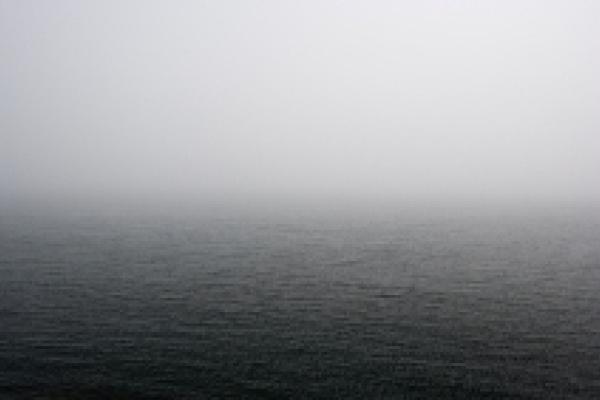
Steamship Mutual
Published: January 01, 2009

A recent U.K. Maritime and Coastguard Agency Marine Guidance Note has highlighted the lack of understanding and application by some deck officers of the International Regulations for Preventing of Collision at Sea (ColRegs) in circumstances of restricted visibility.
The Steering and Sailing Rules of the ColRegs are divided into 3 sections, of which:
- section I; rules 4 to 10, apply in any condition of visibility,
- section II; rules 11 to 18 apply to vessels in sight of one another, and
- section III; rule 19 applies to vessels not in sight of one another in or near an area of restricted visibility.
Steering and Sailing Rules Section I
The rules in section I and their particular application to vessels navigating in or near restricted visibility are worth reiterating here;
Pursuant to rule 5 a good lookout has to be maintained by sight, hearing, radar, VHF and AIS at all times, and in particular lookouts must ensure they also regularly check for vessels abeam, abaft the beam, or astern that may be crossing or overtaking.
The application of rule 6, with regard to determining a safe speed, will vary on a case by case basis and power driven vessels must remember that they are obliged to have their engines ready for immediate manoeuvre. In too many instances excess speed has been deemed to be a causative factor in the lead up to the collision occurring. A vessel’s speed and the factors affecting its determination must be regularly evaluated by the bridge team and the speed adjusted as necessary for changing conditions.
With regard to the determination of risk of collision, in accordance with rule 7, when vessels are not in sight of one another, options are limited to systematic observation of detected targets on the radar. This may be through the use of an Automatic Radar Plotting Aid (ARPA), systematic plotting by china graph pencil on the reflection plotter of a cathode ray tube radar or by monitoring the electronic bearing line against a target on a compass stabilised radar. In addition, Rule 7 states: “risk of collision shall be deemed to exist if the compass bearing of an approaching vessel does not appreciably change”, however, such risk may even exist even when an appreciable bearing change is evident, particularly when approaching a vessel at close range, approaching a very large vessel or when approaching a tug and its tow. When using APRA, if Closest Point of Approach (CPA) and Time to CPA (TCPA) alarms are fitted these should be utilised, and relative vectors set to an appropriate length. Once a target is acquired on an ARPA it must be remembered that it may take a few minutes for the ARPA to acquire adequate data to provide a steady indication of the movement of the other vessel. Relative trails are also a good indication of relative movement of other vessels when determining if a risk of collision exists and should be set to an appropriate length. At all times the radar must be properly adjusted for the prevailing circumstance and conditions and, ideally, different radars should be set on different ranges, one for long range early detection of targets and one on a shorter range for monitoring the movement of vessels in the vicinity; frequent changing of ranges on the same radar will lose the benefit of established vessel relative trails. And, as stated in the rule, it must be remembered that, assumptions shall not be made on the basis of scanty information, especially scanty radar information.
Action taken to avoid collision has to be in accordance with the requirement of rule 8 and shall, if the circumstance of the case admit, be large enough to be readily apparent to another vessel observing visually or by radar. A succession of small alterations of course and/or speed should, as so far as possible, be avoided. The effect of any action taken shall be carefully monitored until the other vessel is partially clear.
With regard to rule 10, deck officers must remember that the fact that a vessel may be using a Traffic Separation Scheme does not relieve her of her obligations under either rule 19, when navigating in or in the vicinity of restricted visibility, or the rules of section II of the Steering and Sailing Rules when in sight of one another.
Steering and Sailing Rules Section III
Rule 19 applies to vessels that are not in sight of one another, navigating in or near an area of restricted visibility. Unlike the rules of section II there are no vessels designated as the “give way”’ or “stand on” vessel. Under the requirements of rule 19, all vessels which determine by radar alone that a close quarters situation and/or risk of collision exists are obliged to take action, regardless of vessel type; the responsibilities between vessels as specified in rule 18 do not apply to vessels not in sight of one another. Vessels may take action to increase the CPA by either altering course and/or adjusting their speed. If an alteration of course is made, in line with the requirements of rule 19, the vessel shall, as far as possible, avoid an alteration of course to port for a vessel forward of her beam, other than for a vessel being overtaken, or an alteration of course towards a vessel abeam or abaft the beam.
Rule 19 further goes on to state, that unless a vessel has determined that risk of collision does not exist, every vessel which hears apparently forward of her beam the fog signal of another vessel, or which cannot avoid a close-quarters situation with another vessel forward of her beam, even when this vessel has been detected and tracked previously by radar, shall reduce her speed to the minimum at which she can be kept on her course. She shall if necessary take all way off and in any event navigate with extreme caution until danger of collision is over. The fact that determining the exact direction from which a sound signal has emanated is quite difficult has to be borne in mind, hence the use of the term “apparently forward of the beam”, and it also has to be remembered that judging distance from a heard sound signal is also very difficult.
In the event that both vessels become visible to each other, for example if one vessel emerges from a fog bank and a close quarters situation and/or risk of collision exists, then the rules of section II of the Steering and Sailing rules will apply as the vessels are now in sight of one another. Therefore the differing obligations affecting vessel when in sight of one another and when not in sight of one another when navigating in or in the vicinity of restricted visibility have to be remembered and applied correctly by all deck officers when taking action to avoid a risk of collision or a close quarter situation.
The full text of the MCA Marine Guidance Note, MGN 369 (M+F), “Navigation: Navigation in Restricted Visibility” can be found on the MCA website at: http://www.mcga.gov.uk/c4mca/mgn369.pdf . Annexed to the Note is a flow chart which summarises how and when the Steering and Sailing Rules apply in these circumstances.


